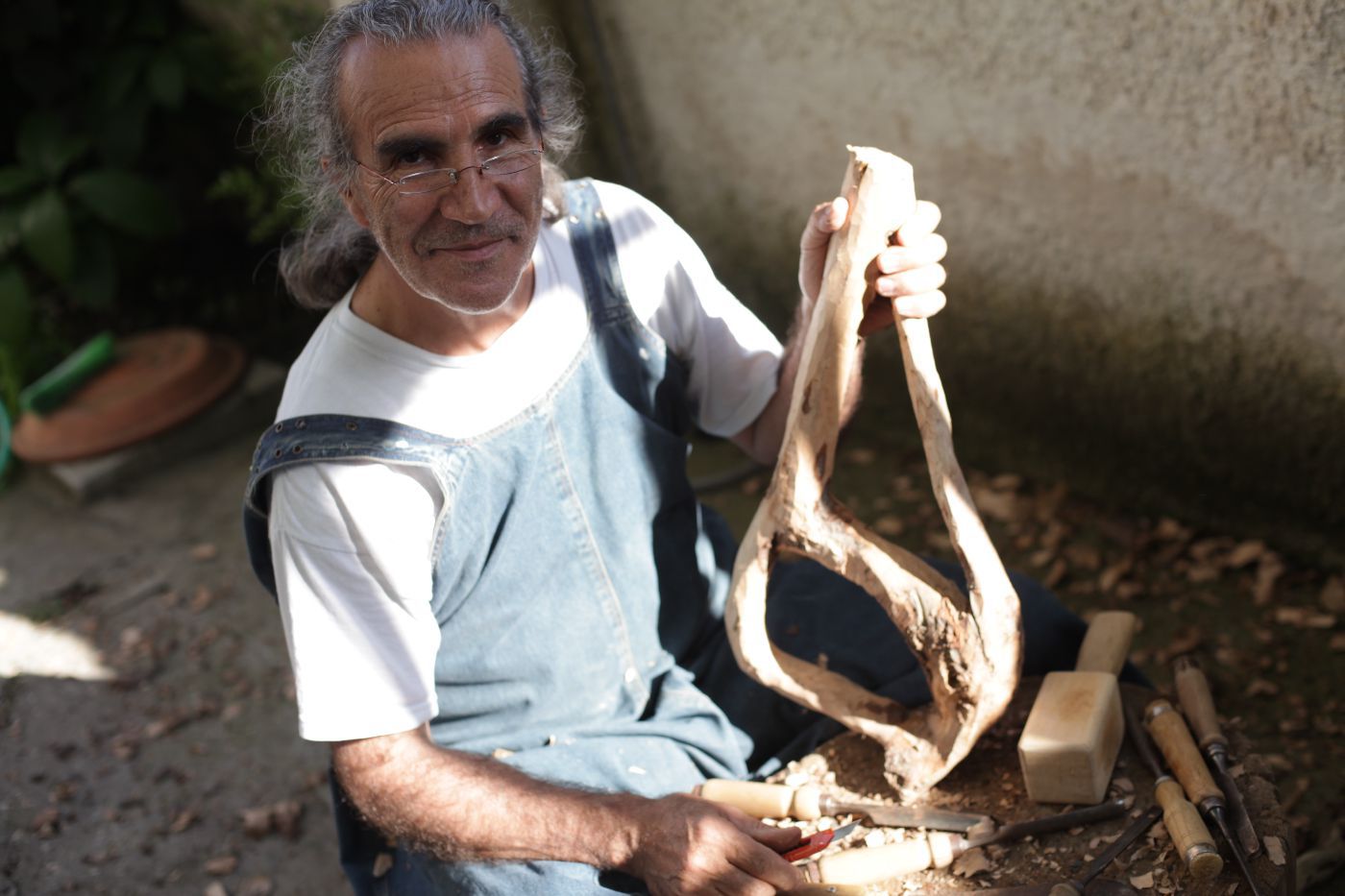
Born in Sardinia in 1951.
As the nephew/grandson of Emilio Lussu, literature exerted a strong influence on him during his youth. He has written several books of poetry, yet the true expression of his creativity has always been sculpture.
Francesco was born in Sardinia , an island of rock and granite. This coexistence made him fall in love with stone.
He studied mineralogy, and became the apprentice of a neighbour who was a stonemason. He began chiselling as an amusement, but then learnt the technique, and created his first simple granite shapes.
After moving to Rome, his manual skill developed. In fact, for lack of granite, he used the roots of acacia, elm, olive, and juniper trees for his sculptures.
In Eastern philosophy, and in China in particular, the four cardinal elements of humanity - water, fire, air, earth- are joined by a fifth: wood, which became the distinctive feature of Francesco Scanu Lussu's work.
He spent a long time travelling in South America: Venezuela, the Caribbean, and the Amazon Forest. There he observed intricate snarls of wood, which inspired images more truthful than reality. These vibrant, unpredictable creations are often twisted, sensual, and taut, as if overcome gravity with free flight.
These works are the struggle of matter to free itself of the inessential, and float in absolute space. They represent the movement originating in stillness, which transform figures, making them weightless, footloose. They are the endless journey of form, works animated by the creative process, expressions of a poetry they are full of.
Thus , the mature expression of this artist emerges from the trunks and roots of the forest, and is based on the definition of a " primary mass ": in its essence wood expresses the vital flows, emotions, intuitions, and secret impulses that only art can make visible.
His entire life is a creative process, and his pursuit of poetry and harmony, like an insatiable appetite, drives him around the world.
From Avignon to Paris. From Salzburg to Moscow. Fascinated by Slovenian orthodoxy, just as by the magnificence of Himalayan Nepal, and the silent smiles of the Buddhist monks he met there.
He travelled across India, from east to west, where colour became his greatest challenge: he attempts to translate it into a "dimension" to turn it into a face, hands, an embrace, a dawn at sea.The focus of the artist's restlessness is exaltation through sculpture, the formalizations of beauty.
This tension has won him the approval and admiration of many personalities: artists, writers, journalists, poets. His pieces are part of private collections in Germany, Sweden, Canada, Brazil, Columbia, and in the Italian Embassy to the Holy See.
He has held several one-man and collective exhibitions. At the 2000 edition of the "Festival of Two Words" in Spoleto, he captivated both critics and public, obtaining enthusiastic press and television reviews.
During the Assisi meeting for peace in 2000, the Palestinian and Israeli delegations invited him to exhibit his sculptures in Jerusalem. Furthermore, since 1996 he has taken part in "Telethon", a fund-raising event sponsored by Banca Nazionale del Lavoro.
In brief, one can simply describe the sculptures of Francesco Scanu Lussu as fascinating creations which spark off spontaneous emotions, in a fusion of technical skill and unique sensitivity.
The artist's objective is live, and he gently favours all that is of use to man. His work is both a warning and a caress, which gently suggests to combine forces to the advantage of nature. Nature is the overlooking mystery, in which nothing is destroyed and all is transformed, by an art that fascinates with its elegance and formal balance, thus leading to deeper dimensions, where all is silence and harmony.